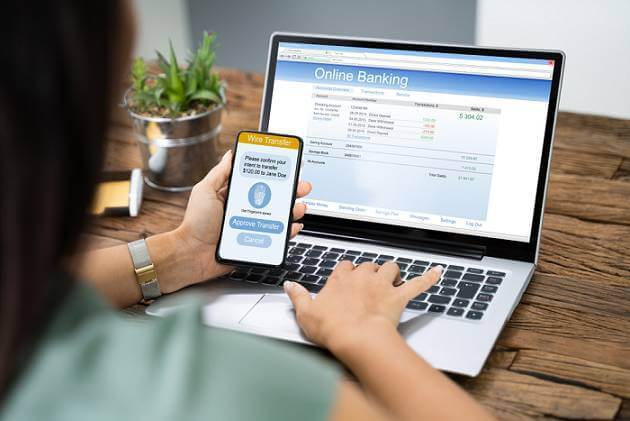To say that shopping and banking online are convenient options is a big understatement. In addition, once the COVID-19 global pandemic reared its ugly head in 2020, both of these activities helped to keep us safe. Instead of heading to the grocery store, the mall or the brick-and-mortar bank in person, we can buy needed items and pay our bills from the comfort and safety of home.

Additional Benefits of Shopping and Banking Online
Both shopping and banking online also allow you to take care of these tasks literally any time of day — no more waiting for the bank and grocery stores to open. Also, as Tough Nickel notes, you can often find better prices on what you need online as well as more variety. Taking care of your banking online may mean you no longer pay pesky late fees on your bills; you can set up auto payments on everything, and you also no longer have to shell out money to mail your bills each month.
With Convenience Comes Risk
Sadly, there can be a dark side to online shopping and banking: specifically, a larger risk of fraud. From identity theft and phishing scams to shopping at a website that turns out to be bogus and having your account information stolen by a hacker, the joys of buying clothes online along with easily transferring money to a family member any time of day or night may be destroyed by a crook who gets access to your personal information.
How to Protect Yourself When Shopping or Banking Online
Here is some great news: you don’t have to give up the online banking and shopping you have come to enjoy, and you can continue to stay as safe as possible during the global pandemic. There are a number of ways to protect your private data online that will help keep cybercriminals at bay. For example, start by looking into an identity theft protection plan from Norton LifeLock. In addition to providing your devices with real-time threat protection that is multi-layered and defends you from malware threats, the company will immediately alert you if your Social Security number, name, address or birth date is used in an application for credit or services.
Also, when shopping online, Integrity Insurance advises that you make sure the URL starts with “https” instead of “http.” The “https” website is secure and encrypted, which means you have a reduced risk of having your credit card information becoming compromised when shopping there.
Make It Hard for Hackers to Gain Access
For both your bank and your online shopping activities, create unique usernames and passwords, and if possible, go with two-factor authentication whenever possible. Yes, it will take a bit longer to get a text with a code to help you log into your credit card account, but it will also make it that much harder for a hacker to gain access. Resist the urge to use the same username and password for everything; granted, it will be easier for you to remember two things, but if you are hacked, he or she will immediately get into your Amazon, Target, Chase, Chewy.com and Costco.com accounts.
Shopping and Banking Online Can Be Safe and Secure
Placing orders online for everything from laundry soap and toilet paper to new shoes, books and more can help you save time and money, and paying your bills with a few keystrokes is also a wonderful convenience. By being aware of the risks and then taking tangible steps to prevent them, you should be able to continue to take part in these convenient activities whenever you wish.
HedgeThink.com is the fund industry’s leading news, research and analysis source for individual and institutional accredited investors and professionals



































